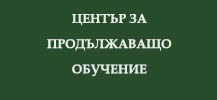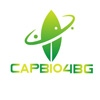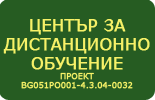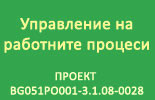|
Learning outcomes of the course unit:
|
The course aims to develop an understanding of the framework of microeconomics. The course introduces students to models that show how individuals and firms interact within markets. It considers how various decision-making units in the economy (individuals and firms) make their consumption and production decisions and how they are coordinated. It introduces the theory of the firm and its components, production and cost theories and market structure models. The various causes of market failure are assessed, and consideration is given to public policies designed to correct this market failure.
This course aims to develop student's abilities to construct and sustain an argument using the phrases and concepts that economists use in their deliberations. A theoretical framework is developed in which students understand how economic agents interact and, by doing so, develop the literacy and verbal communication skills necessary for presenting arguments of an economic nature.
|
|
Course contents:
|
Lectures -30 h
- Conceptual framework of microeconomic theory. Defining Microeconomics. History and development. The Economists’ Tool Kit.
- Consumer theory. The Concept of Utility. Utility Maximization and Demand. Indifference Curve Analysis: An Alternative Approach to Understanding Consumer Choice.
- Production function. Production Choices in Short Run. Production Choices in Long Run: Input substitution. Isoquant and Isocost curve. Marginal rate of technical substitution and factor optimization. Cobb-Douglas production function.
- Cost function. Fixed, variable cost. Average and marginal cost. Cost minimization. The cost function in the short and long run. Economies of scale.
- Profit maximization. Basic definitions. Total revenue–total cost perspective. Marginal revenue–marginal cost perspective. Changes in total costs and profit maximization.
- Perfect competition. The conditions of perfect competition. Supply and demand curve specifics. Short run and long run equilibrium. Efficiency in perfectly competitive markets.
- Market structures. Monopoly. The Nature of Monopoly. Sources of monopoly power. Natural monopoly and government-granted monopoly. The Monopoly Model. Assessing Monopoly. Regulations and law. Monopoly and efficiency. Extensions of Imperfect Competition: Price Discrimination.
- Market structures. Oligopoly- Characteristics. Types of oligopoly. Cournot and Bertrand model. Stackelberg Model of Oligopoly. Cartels. Kinked demand curve model.
- Market structures. Monopolistic competition. Characteristics. Product differentiation and advertising. Profit Maximization in short run and long run.
- Resource Markets. Land market- characteristics. Labour market- wages and employment in perfect competition. Interest Rates and the Markets for Capital and Natural Resources. Time and Interest Rates. Imperfectly Competitive Markets for Factors of Production.
- Externalities, public goods. Market failures. Externalities. The Coase Theorem. The Role of Government in a Market Economy. Choices in the Public Sector.
- Optimum theory. Pareto efficiency and equity. Pareto efficiency and market failure.
- Game Theory and Industrial Organisation. History and development. Types of games. The Prisoners’ Dilemma. Dominant strategy. Nash equilibrium. Maximum strategy. Cooperative strategy (collusion).
Tutorials - 30h
- Consumer theory: budget constraint, preferences, utility, optimal choice, demand
- Production theory: production set, production function, short-run and long-run.
- Production function. Production Choices in Short Run. Production Choices in Long Run: Input substitution. Isoquant and Isocost curve. Marginal rate of technical substitution and factor optimization. Cobb-Douglas production function.
- Cost function. Fixed, variable cost. Average and marginal cost. Cost minimization. Cost function in the short and long run. Economies of scale.
- Profit maximization. Basic definitions. Total revenue–total cost perspective. Marginal revenue–marginal cost perspective. Changes in total costs and profit maximization.
- Perfect competition. The conditions of perfect competition. Supply and demand curve specifics. Short run and long run equilibrium. Efficiency in perfectly competitive markets.
- Market structures. Monopoly. The Nature of Monopoly. Sources of monopoly power. Natural monopoly and government-granted monopoly. The Monopoly Model. Assessing Monopoly. Regulations and law. Monopoly and efficiency. Extensions of Imperfect Competition: Price Discrimination.
- Market structures. Oligopoly- Characteristics. Types of oligopoly. Cournot and Bertrand model. Stackelberg Model of Oligopoly. Cartels. Kinked demand curve model.
- Market structures. Monopolistic competition. Characteristics. Product differentiation and advertising. Profit Maximization in the short run and long run.
- Resource Markets. Land market- characteristics. Labour market- wages and employment in perfect competition. Interest Rates and the Markets for Capital and Natural Resources. Time and Interest Rates. Imperfectly Competitive Markets for Factors of Production.
- Externalities, public goods. Market failures. Externalities. The Coase Theorem. The Role of Government in a Market Economy. Choices in the Public Sector.
- Optimum theory. Pareto efficiency and equity. Pareto efficiency and market failure.
- Game Theory and Industrial Organisation. History and development. Types of games. The Prisoners’ Dilemma. Dominant strategy. Nash equilibrium. Maximum strategy. Cooperative strategy (collusion).
|
|
Recommended or required reading:
|
- Mankiw, N.G., 2021. Principles of Microeconomics 9e. Cengage Learning Asia Pte Limited.
- Chiang, E., 2013. Core Microeconomics. Macmillan Higher Education.
- Krugman, P. and Wells, R., 2008. Microeconomics. Macmillan.
- Cowen, T., Tabarrok, A. and Tabarrok, A., 2015. Modern principles: microeconomics. New York: Worth Publishers.
- Mas-Colell, A., Whinston, M.D. and Green, J.R., 1995. Microeconomic theory (Vol. 1). New York: Oxford university press.
- Tucker, I.B., 2022. Microeconomics for today. Cengage Lear
- Frakt, A. and Piper, M., 2014. Microeconomics Made Simple: Basic Microeconomic Principles Explained in 100 Pages Or Less. Simple Subjects, LLC.
- Colander, D., 2008. Microeconomics.7th Edition. McGraw-hill
- Pindyck, R.S. and Rubinfeld, D.L., 2014. Microeconomics. Pearson Education.
- Kreps, D.M., 2013. Microeconomic foundations I: choice and competitive markets (Vol. 1). Princeton university press.
- Kreps, D.M., 2013. Microeconomic Foundations II: Imperfect Competition, Information, and Strategic Interaction. Princeton university press.
- Levitt, S.D. and Dubner, S.J., 2014. Freakonomics. B DE BOOKS.
- Varian, H.R. and Varian, H.R., 1992. Microeconomic analysis (Vol. 3). New York: Norton.
- Jehle, G.A., 2001. Advanced microeconomic theory. Pearson Education India.
- Goodwin, N., Harris, J.M., Nelson, J.A., Rajkarnikar, P.J., Roach, B. and Torras, M., 2018. Macroeconomics in context. Routledge.
|
 - Събития по случай 80-я юбилей на АУ
- Събития по случай 80-я юбилей на АУ











